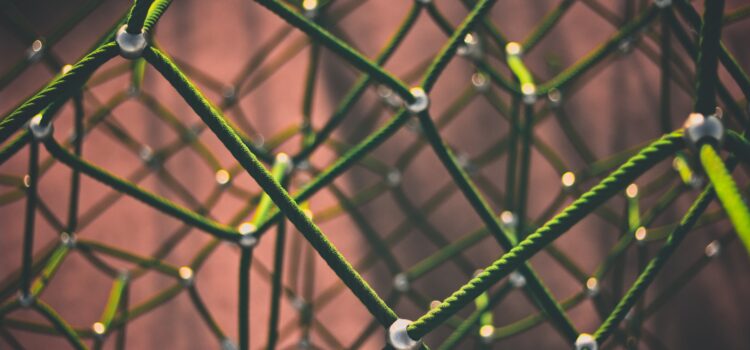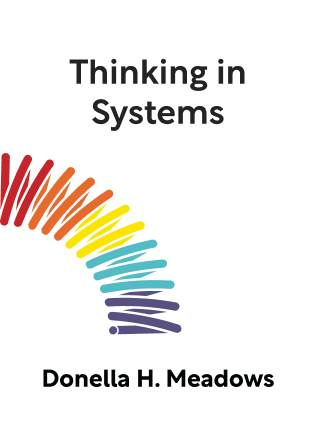

This article is an excerpt from the Shortform summary of "Thinking in Systems" by Donella H. Meadows. Shortform has the world's best summaries of books you should be reading.
Like this article? Sign up for a free trial here .
What are the components of a system? What does a system need to ensure that it works properly?
The components of a system are an important part of why it’s able to work. Without these components, a system will likely fail.
Read more about the components of a system and why they matter.
Components of a System
Let’s go deeper into understanding the three components of a system.
Elements
Elements are usually the most noticeable. They are the things that make up the system. The football team consists of players, coaches, and a ball. If you zoom out a bit further and define a larger system, the elements can also include the football fans, the city the team resides in, the staff that supports the team, and so on.
Elements don’t need to be tangible things. The system components of a football team also consists of intangibles like the pride that fans have for their team, the reputation of players in the league, or the motivation to practice.
You can define an endless number of elements in any system. Before you go too deep down this rabbit hole, start looking for the interconnections between elements.
Interconnections
Interconnections are how the elements relate to each other. These interconnections can be physical in nature. Take the football team again:
- The players line up in a particular formation, with specific roles in specific places
- The individual players pass the football to each other
- The players maneuver themselves against and around the opposing teams’ players
- The team’s fans surround the players in a circular arena to watch the game
Interconnections can also be intangible, often through the flow of information.
- During a game, the coach receives information from the field, then decides on a strategy and communicates that strategy to the quarterback
- A television broadcaster communicates the information about the game to an audience nationwide
- Outside of games, the training staff uses information from the game to decide how to develop the players
- A player receives information from his agent about openings at other teams
The information interconnections may be harder to see at first, but they’re often vital to how the system operates.
Purpose
The purpose or function is what the system achieves.
Of the three elements, the purpose is often the hardest to discern. It’s not often made explicit, such as in the case of a tree.
The best way to figure out a system’s purpose is to see what it actually does. The way a system behaves and its result is a reflection of the system’s purpose.
- A football team’s purpose is often to win games. But looking at its performance of individual players, you might find that their purpose is to make more money or attract attention.
- A national government may communicate that its purpose is to take care of the poor and reduce inequality, but if it makes little effort toward this goal, it’s not actually a function of the system or the system components.
- Many systems don’t have explicitly stated purposes, so, once again, you can observe what it does. What is the purpose of a tree? To grow as large as it can within its lifetime; to spread seeds and reproduce itself; to compete against other plants for limited resources.
A vital purpose of most systems is to perpetuate itself. This is why the components of a system matter.
Which Aspect Is Most Important?
Which of the three components of a system is most important? The elements, interconnections, and purposes are all necessary, but they have different relative importances.
To think about this, consider changing each of the system components one by one.
Changing elements: You can change the individual players and coaches, but if you keep the same interconnections and purpose, it’s still clearly a football team. Likewise, you can change the members of the US Senate or a corporation, but they still maintain their identities. Thus, the specific elements are usually the least important in the system. (Shortform note: This is related to the Ship of Theseus thought experiment.)
Changing interconnections: Changing the interconnections can dramatically change the system. Imagine changing the rules of the game from football to rugby, while keeping the same players. Or imagine a system where the players paid money to watch the fans. These are certainly not recognizably football teams, even if all the elements remain the same.
Changing purpose: Changing the purpose can also be drastic. What if the goal of the team were to lose as many games as possible? What if the purpose were to make news headlines? The system would be very different, even if the elements and interconnections stayed the same.
Therefore, typically, the purpose is often the most important determinant of a system, followed by interconnections, then by elements. These are how to components of a system work together.
However, sometimes changing an important element can also change the interconnections or the purpose. Changing China’s leadership from Mao to Deng Xiaoping dramatically changed the nation’s direction; even though the one billion people and millions of organizations were exactly identical, their interconnections and their purpose became very different.

———End of Preview———
Like what you just read? Read the rest of the world's best summary of Donella H. Meadows's "Thinking in Systems" at Shortform .
Here's what you'll find in our full Thinking in Systems summary :
- How the world, from bathtub faucets to fish populations, can be seen as simple systems
- The key system traps that hold back progress, such as escalating arms races and policy addiction
- Why seeing the world as systems can give you superpowers in work and life






